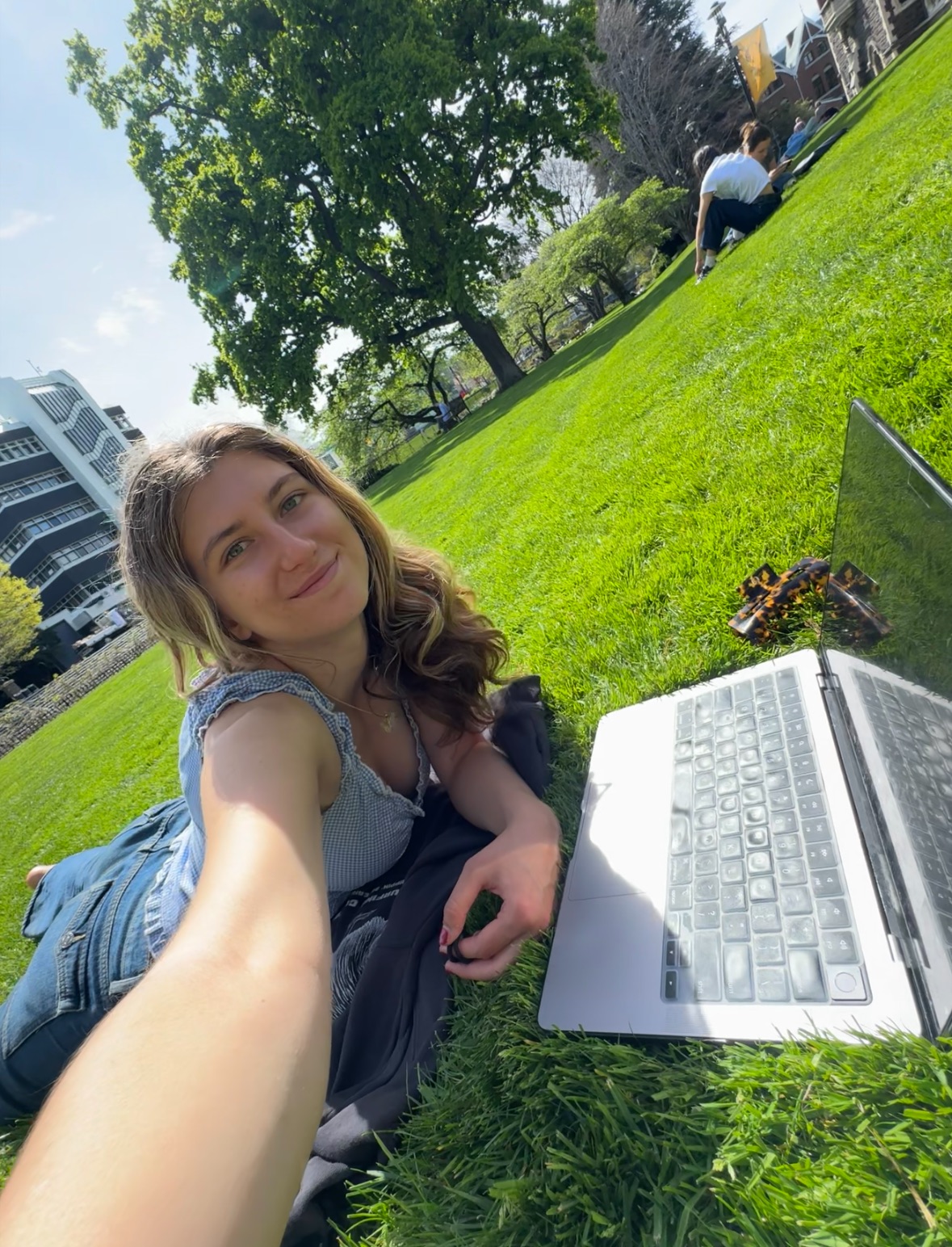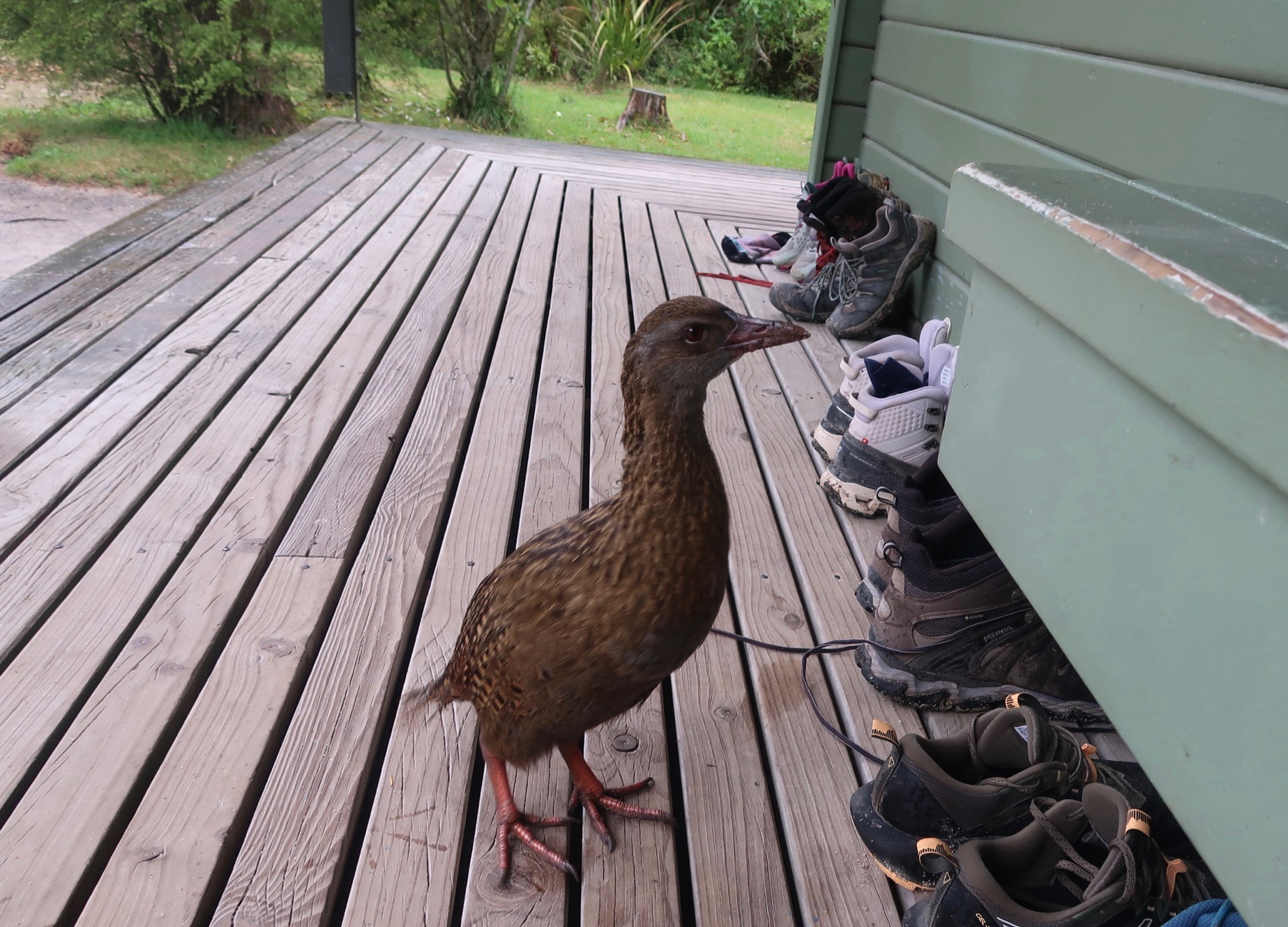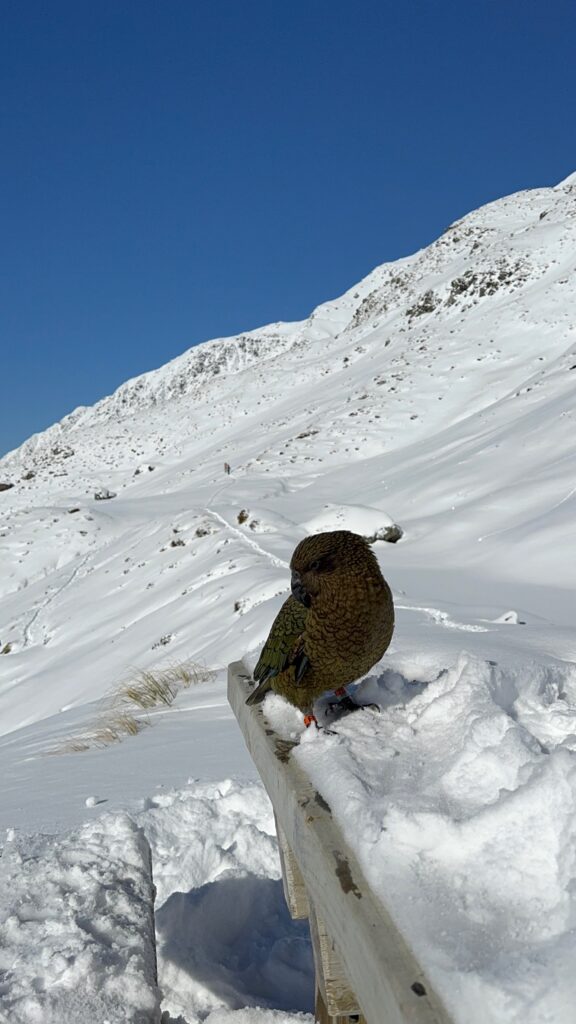
Kiwi, Kaka, and Kea: Oh My!
SA: University of Otago in Dunedin, New Zealand
Sophia, one of the Semester Abroad Correspondents, shares her experience abroad during the Fall 2025 semester. Follow along with the group of correspondents on our blog and look out for their images on the @pennabroad Instagram feed.
Finding a new appreciation for birds in New Zealand
As my study abroad in Aotearoa New Zealand comes to a close, I find myself reflecting on my experience. A few defining words: remote, isolated, breathtakingly stunning. For a country the size of Colorado, it’s shockingly difficult to drive around. (The typical one-lane highway here would quiver next to I-95.)
Part of the reason New Zealand is so unique can be attributed to its relative recency in the geologic timescale. I just took a New Zealand specific geology class at the University of Otago, so bear with me. Zealandia is both the Earth’s newest and smallest continent, breaking off from Gondwana during the Paleocene, 55-70 million years ago. Over 95% of Zealandia is submerged, so I can’t even imagine how beautiful the parts underwater right now must be. As the continent drifted to its current position, it brought with it mostly birds, except for one mammal: bats.

The lack of natural predators for these birds resulted in the devastation, endangerment and eventual extinction of many birds during Maori and European arrival, less than 700 years ago. The introduction of small mammals, from rats and hedgehogs to domesticated dogs, have resulted in the massive loss of species and the near extinction of others. The phrase, “the only good possum is a dead possum” is one uttered by everyone, from bar patrons to grandmas in knitting circles, to hearty assent. Yarn and clothing made from possum wool is a staple item sold in stores.
Yet, the birds I have seen here have been plentiful and gorgeous. Each morning, as I walked out from my flat, I saw two paradise shelducks sitting outside my back door. During my time here, I found myself fascinated by all of Aotearoa’s birds, and every time I saw a new one, I felt a small victory. While some birds, like the kaka or the kea, are very unafraid and almost too friendly when it comes to humans, others require patience and quiet to spot, like the nocturnal kiwi or shy parakeets. Birdwatching and searching required both attention and appreciation, something I’ve always tried to cultivate in my own poetry. So my practice of watching birds and writing poetry developed a symbiotic relationship.
A lot of my birdwatching was accomplished near Raikura, also known as Stewart Island. It’s NZ’s third-largest island, and home to the Southern brown kiwi, along with other rare birds. I took a water taxi to Ulva Island, which has successfully eradicated its rat population and allowed the native birds to thrive. On the island, which was a short water taxi ride away, I saw over ten new species of birds, including the kererū (wood pigeon), South Island robins, saddlebacks, and the flaming-orange-and-black variable oystercatcher.

Later that evening, I went on a wildlife spotting cruise, where I was the first person to see the Fjordland crested penguin. Then, we docked on the beach of an island highly populated with the elusive kiwi. Our small group walked along at what felt like a zombie crawl, with nothing but small hand flashlights to light the way. The guides used infrared lenses to spot the heat waves of the tiny bird, and all of a sudden we stopped. Off to the left, I saw a giant kiwi, just feet away, scrounging around on the damp forest floor with its elongated, needle-like beak. It was amazing to see this iconic bird in its natural habitat.
shuffle in silence
quiet hush in hopes to coax
out marrow-boned bird
Later in the year, I tramped along the Abel Tasman Coastal Track––one of NZ’s “Great Walks.” On the hike, I saw weka for the first time! Like the kea of Mt. Cook, weka are mischievous, bold, and utterly fearless in regards to humans. Unlike kea, they are flightless! Imagine the roadrunner from Looney Tunes, then place it into a tropical oceanside setting. There’s your weka. Since it’s spring, I was lucky enough to see little baby chicks!

Dunedin, my host city, has its own fair share of unusual bird life. It hosts the only mainland colony of Northern Royal Albatross:
with a single stroke
albatross dips, defiant
black swoop against sky
The kororā, little blue penguins, come to shore every night at Pilot’s Beach. Journeying out onto the peninsula to see these birds felt like an integral part of my study abroad experience:
beneath crescent moon I watch you
find your way once more
winter means you swap your home
from shore to shallow shoals
of anchovies and krill silver mouthfuls
of fin and gill
you have spent days away from the salt
soaked sand and now ready for respite
cocoa warming my hands as you jet
out of an inky inlet pure instinct
shivering spent after a day hunting
in the cool hues
waves rock your tiny bodies
rafts turn into waddles
you make awkward scrambles across
dune grass into small burrows
two little blues remain on the incline
in no rush as feathers ruffle
my cup gone cold eyes gulping
down brackish dusk
adjusting to the quiet dark I whisper a wish
on unfamiliar stars and let
my shoulder become a whare for my head
let my shadow melt around your aroha



Lastly, part of my interest in these birds stem from learning about the legendary moa, the now extinct bird that roamed Aotearoa freely before human arrival. These gentle giants stood at three meters tall, over double the size of an average human! They were the tallest birds to ever exist. At the Royal Albatross Centre, one of the conservationists told me that a large site of moa bones is located off the roadside on the Otago Peninsula, which has now been turned into a golf course. That story inspired me to write this last poem.
They built a golf course over the graveyard
of buried moa bones. I learned of this haunting
last week on a bird tour. As Portobello Road
curves towards Tairoa Head, just look to your left
and listen through the ocean’s roar. Imagine:
the rev of engines become the revived rumblings
of these giant ratites. In less than a century
of human settlement, all were gone. Salt sprays
their silhouette into my psyche and now all I see
is the ghost of the last one on the peninsula,
alone, a flightless long-necked creature, large
enough to feed an entire family for weeks. Eggs
the size of cantaloupes, eyes the size of golf balls
being teed off every Saturday in casual attempts
of survival, where being below par becomes a cry
of celebration, cause to scream eagle albatross
condor birdie birdie birdie birdie birdie birdie
birdie the bones echo back
emptiness
I’ll forever be grateful to Penn and the University of Otago for this opportunity to study abroad, immerse myself in New Zealand’s nature, and hone my own poetic practice. As I head back home and to Philly for the spring semester, a little part of my heart will be left behind in Dunedin.
Read Related Blogs

What the Wind Knows: Notes from the Steppe
PGS: Mongolian Civilization: Nomadic and Sedentary Will, one of the Penn Global Seminar Correspondents, shares his experience abroad during the May 2025 travel period. Follow along with the group of correspondents on our blog and…

A Thank You Letter to Penn and the World
PGS: Disability Rights and Oppression: Experiences within Global Deaf Communities Tasmiah, one of the Penn Global Seminar Correspondents, shares her experience abroad during the May 2025 travel period. Follow along with…

In the Absence of Certainty
PGS: Rivalry, Competition and International Security in Northeast Asia Lala, one of the Penn Global Seminar Correspondents, shares her experience abroad during the May 2025 travel period. Follow along with the…